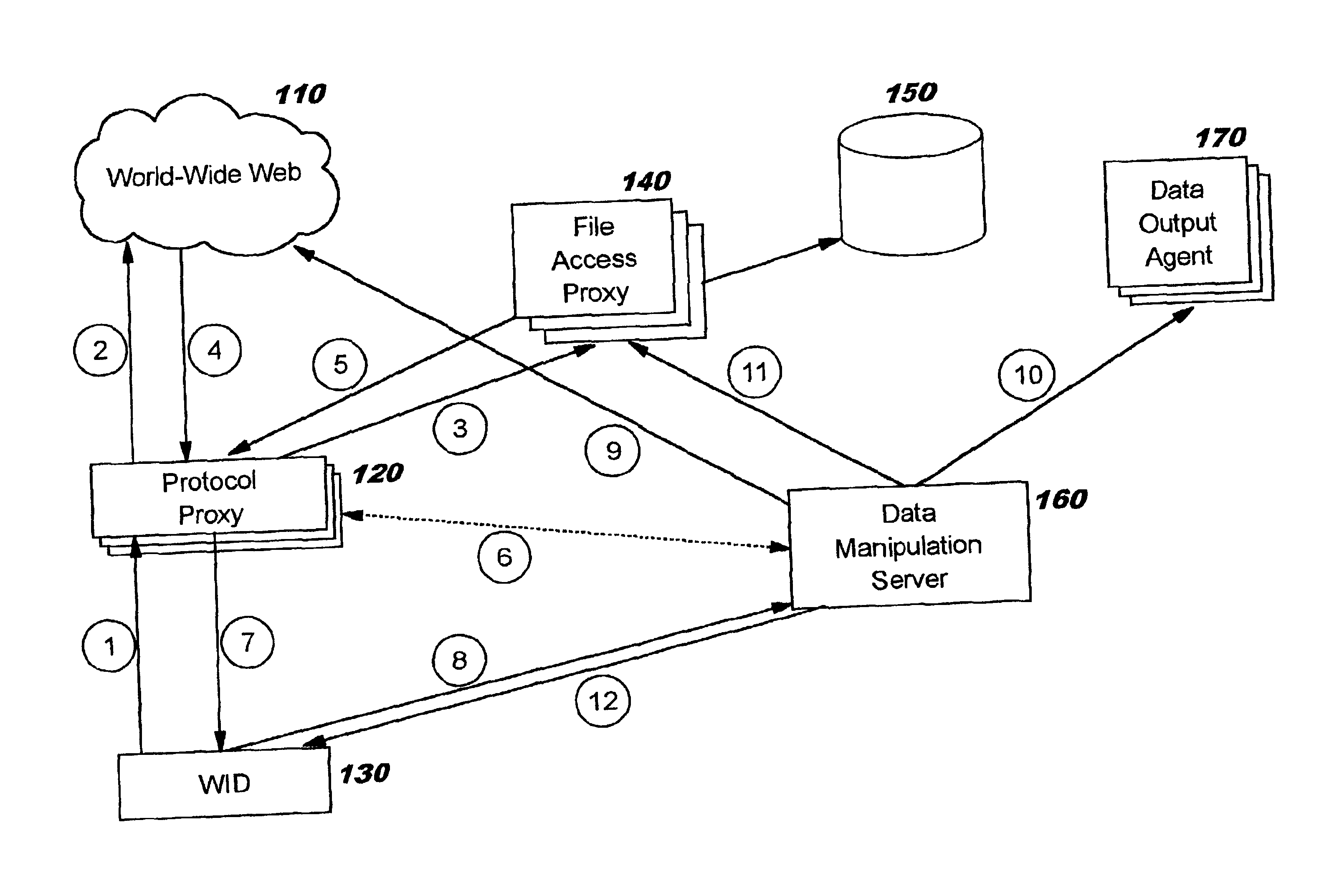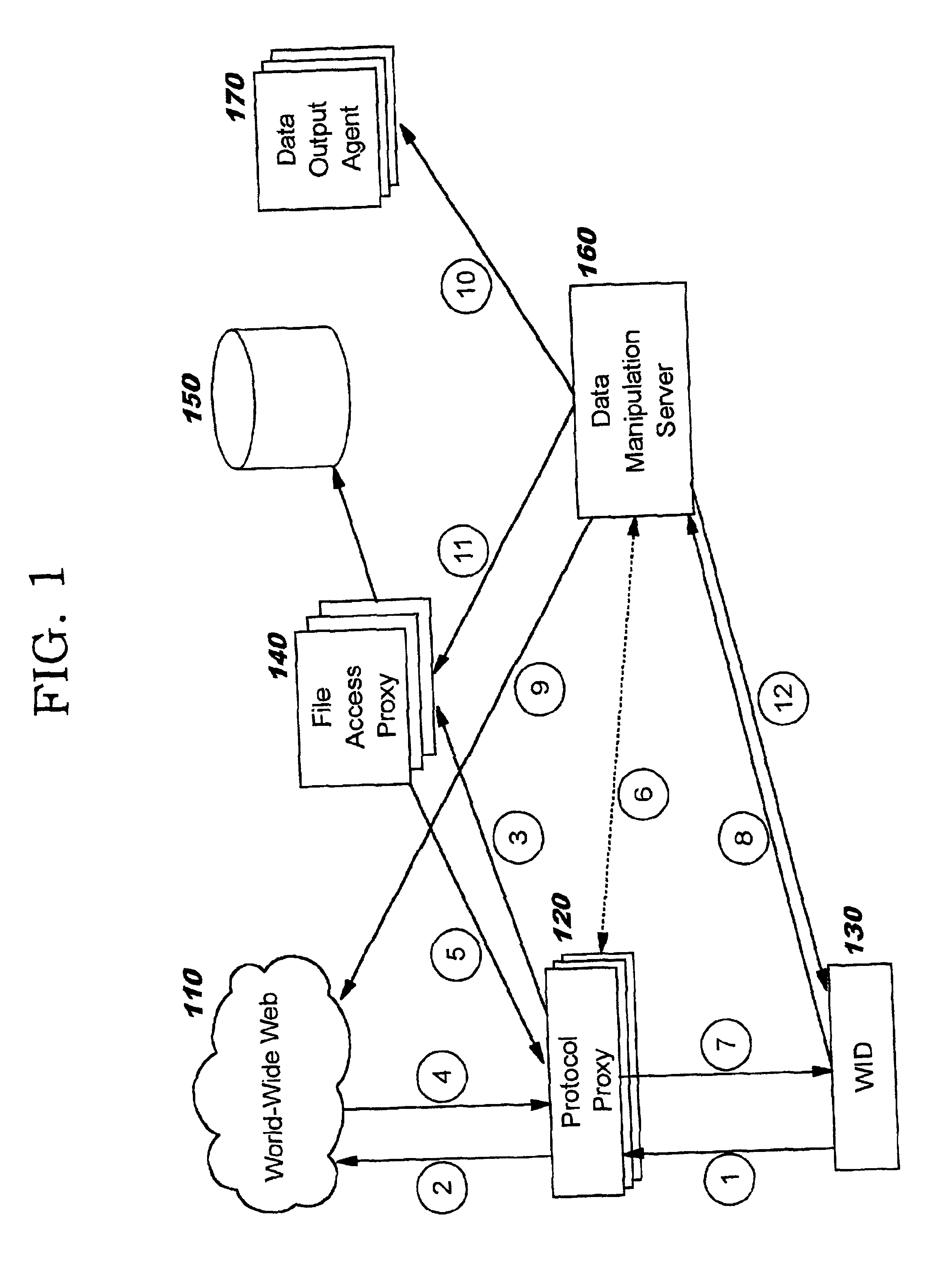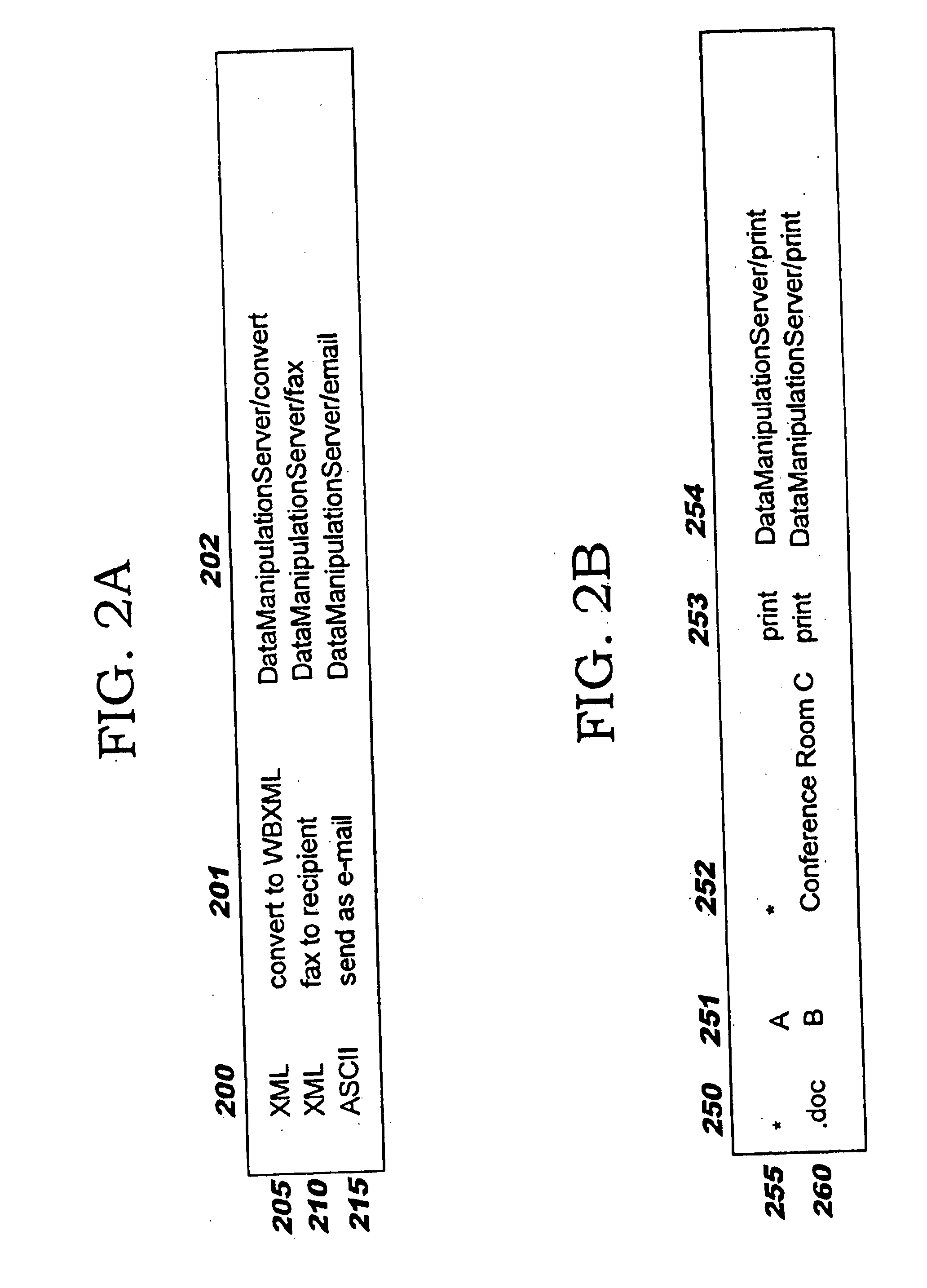Technique for enabling remote data access and manipulation from a pervasive device
a pervasive device and remote data technology, applied in the field of pervasive computing, can solve the problems of limited memory capacity, limited processor speed, and not all pervasive devices are necessarily mobile, and achieve the effects of facilitating access, cost-effectiveness, and efficient us
- Summary
- Abstract
- Description
- Claims
- Application Information
AI Technical Summary
Benefits of technology
Problems solved by technology
Method used
Image
Examples
Embodiment Construction
[0029]The present invention will now be described more fully hereinafter with reference to the accompanying drawings, in which a preferred embodiment of the invention is shown. Like numbers refer to like elements throughout.
[0030]Flowchart illustrations of aspects of the present invention are described below. The logic of these flowcharts may be provided as methods, systems, and / or computer program instructions embodied on one or more computer readable media, according to an embodiment of the invention. As will be obvious to one of ordinary skill in the art, these flowcharts are merely illustrative of the manner in which the associated aspects of the present invention may be implemented, and changes may be made to the logic that is illustrated therein (for example, by altering the order of operations shown in some cases, by combining operations, etc.) without deviating from the inventive concepts disclosed herein.
[0031]The present invention provides an efficient, cost-effective tech...
PUM
 Login to View More
Login to View More Abstract
Description
Claims
Application Information
 Login to View More
Login to View More - R&D
- Intellectual Property
- Life Sciences
- Materials
- Tech Scout
- Unparalleled Data Quality
- Higher Quality Content
- 60% Fewer Hallucinations
Browse by: Latest US Patents, China's latest patents, Technical Efficacy Thesaurus, Application Domain, Technology Topic, Popular Technical Reports.
© 2025 PatSnap. All rights reserved.Legal|Privacy policy|Modern Slavery Act Transparency Statement|Sitemap|About US| Contact US: help@patsnap.com



